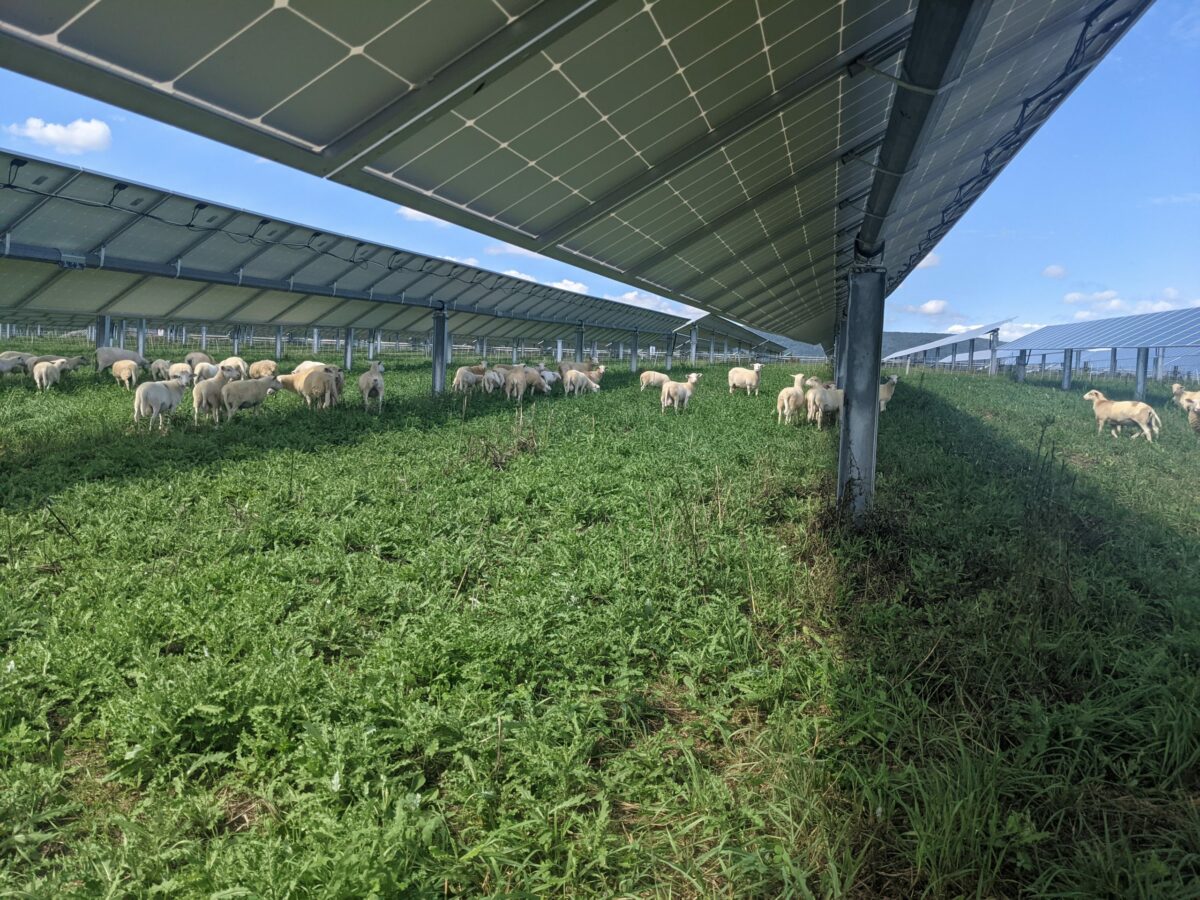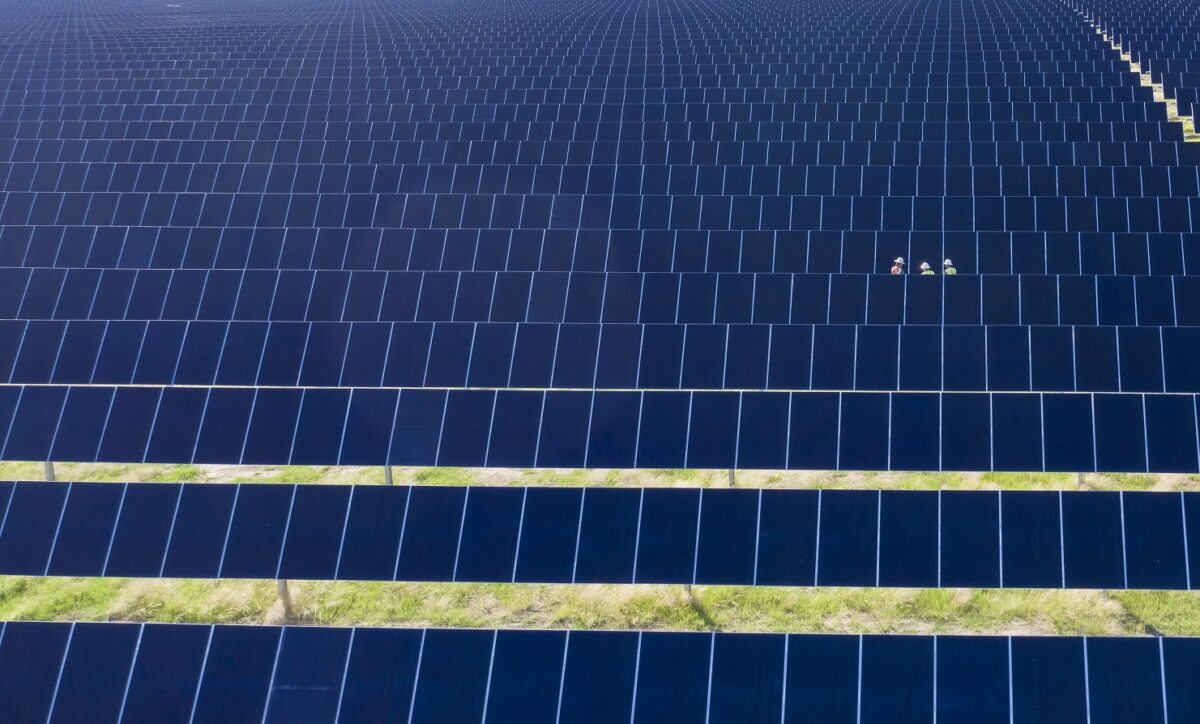Energy buyer’s guide part 1: What is the best way to buy clean energy?
First article in a series by Emilie Wangerman, Head of USA, Interim COO:
Clean energy procurement is not a one-size-fits-all approach. Several important factors determine which product is best for your business.
As more organizations seek renewable energy, solar developers are expanding procurement options. Read more to gain insight into which option is best for you.
This article is the first in a series to guide clean energy buyers through options and considerations involved in the procurement process.
Corporations seek to make an impact and drive change to protect our climate. The newly-released sixth IPCC assessment report accelerated the urgency: “the evidence is clear: the time for action is now. We can halve emissions by 2030.”
It’s my job to support businesses and organizations as they seek to cut emissions and move away from fossil fuels. This series is designed to help clean energy buyers through the process.
According to Bloomberg New Energy Finance, corporations bought 31.1 GW of clean energy globally through Power Purchase Agreements in 2021, up nearly 24% from 2020. Interest in renewable energy is on the rise as more businesses seek to take control over their energy consumption. Google and Amazon are not the only corporations buying clean energy – there are now well over 200 companies procuring renewables.
This growth is partially in response to investor expectations for companies to change behaviors. But for many companies, renewable energy procurement is also an economic decision. Solar is one of the lowest-cost resources available. Many of the businesses I talk to purchase solar because it saves them money through long-term contracts. They also get to enjoy the upside of meeting ESG (Environmental, Social and Government) goals.
Clean energy buyers may be overwhelmed with the abundance of procurement options. The range of choices runs from buying energy directly from a renewable project, to purchasing Renewable Energy Credits (RECs), to Virtual Power Purchase Agreements (VPPAs), Proxy Generation (PG PPAs), or Physical PPAs. There are also more complex products, such as tolling agreements, upside sharing and other derivatives.
This series will explore the factors clean energy buyers should consider as they evaluate the benefits and risks of different options. For each factor, I’ll share a case study illustrating why a Lightsource bp partner chose to proceed with their preferred procurement method.
We’ll look at:
– Company goals: What is most important to your company: Are you working toward your RE 100 goals? Do you seek to add renewables to the grid to achieve additionality? What type of emissions are you focused on, Scope 1 or Scope 2?
– Geography: Where are you located? Are you in a deregulated or regulated market? Do you have access to land? Do you have your own electricity infrastructure to support a project?
– Energy demand: What types of electricity needs do you have? Is your electricity usage dispersed, or is it centralized? Do you have a factory that must run 24/7 or do you have multiple locations?
Before we jump into the factors, allow me to provide clarity on the different ways companies are buying clean energy.
One – Energy only. You can buy the energy directly from a renewable energy project. In doing so, you would not acquire the environmental attributes of the project. With this option, it’s harder to claim recognition for the environmental benefits for this energy because someone else might purchase the RECs and get that credit. There are several contract structures available to purchase energy. You can also purchase replacement RECs to support your sustainability claims.
Two – You can buy Renewable Energy Certificates (RECs). When solar producers generate electricity, they earn RECs, which represent the clean energy attribute of that electricity. Corporations can offset their existing emissions by buying that REC; yet procuring RECs does not mean you will be receiving the energy from that project, nor does it guarantee that the project was built as a result of the contract. This structure may fail to induce “additionality” because you may be purchasing RECs from an existing project versus contributing to the construction of new renewable energy.
Three – You can buy renewable energy “virtually” along with RECs through a Virtual Power Purchase Agreement. In a VPPA, the energy buyer and seller agree on a pre-arranged price for the power coming out of a renewable project. But that power is sold into the market rather than traveling to the buyer (as with a physical PPA). If the market rate for power exceeds the VPPA price, the producer sends the buyer the difference. If the market rate is less than the VPPA price, the buyer covers the difference. With this option, you’ll obtain RECs and you’ll actually contribute to new renewable energy construction.
Four – You can buy the physical energy from a renewable energy project along with the RECs through a Physical PPA. In a Physical PPA, the energy buyer agrees to purchase the power from a renewable energy project and associated RECs at a pre-arranged price. The power is physically delivered to the buyer from the generation site. With this option, the project is built for the buyer, and they get naming rights if they wish.
If you’d like to get more creative with your contract structuring, we can also consider Proxy Generation PPAs, upside sharing, and hedge structures, which may be used by specialty buyers with unique needs. I will cover these in a later part of the series.
As more businesses enter the renewable energy market for the first time, it is critical for them to understand all available options. Certain contracts could involve fewer regulatory hurdles, have easier implementation or contain simpler accounting requirements. It’s also important to understand who you are buying from, and have confidence that they can deliver on the agreement you put into place. There is a lot to unpack here, which is why this post is the beginning of a series of explainers on the topic.
Check out my next post, which more closely looks at the first consideration: organizational goals and how they affect which energy contract is right for you.
Emilie Wangerman first published this article on LinkedIn on April 12, 2022. To leave a comment or question, please view the original post here.
About the author:
Emilie Wangerman brings 13 years of energy industry experience across energy procurement, customer programs, operations, power marketing, acquisitions, and growth strategy to her role as the Head of USA, Interim COO for Lightsource bp. She joined Lightsource bp in late 2017 to significantly accelerate expansion into the U.S. market. Since then, the U.S. team has developed more than 3.4GW of projects, raised more than $4 billion in project financing, and built a strong pipeline of over 30GW. During 6 years under Emilie’s leadership, the business development team executed more than 4GW of power contracts with a wide range of power purchasers that include universities, utilities and well-known brands such as McDonald’s, eBay, Verizon, and Amazon. The team also acquired over 15GW of projects to support the greenfield pipeline.
Prior to Lightsource bp, Emilie held leadership positions at Pacific Gas and Electric (“PG&E”) and Intel Corporation. Emilie received a Bachelor of Science in both Chemical Engineering and Psychology from Rensselaer Polytechnic Institute, a Master of Business Administration at Duke University’s Fuqua School of Business, and a Master of Environmental Management at the Nicholas School of the Environment.
Read Emilie’s leadership story here.
Partner with us: Energy Buyers
Discover how Lightsource bp works with largescale energy buyers to execute power purchase agreements customized to your business needs.
More from our Energy Buyer's Guide
25 May, 2022
Energy buyer’s guide part 2: Why are you buying clean energy?
Article by Emilie Wangerman
09 Aug, 2022
Energy buyer’s guide part 3: Who do you need on your team for successful renewable energy procurement?
Article by Emilie Wangerman
23 Aug, 2022
Energy buyer’s guide part 4: The many advantages of the Inflation Reduction Act
Article by Emilie Wangerman




